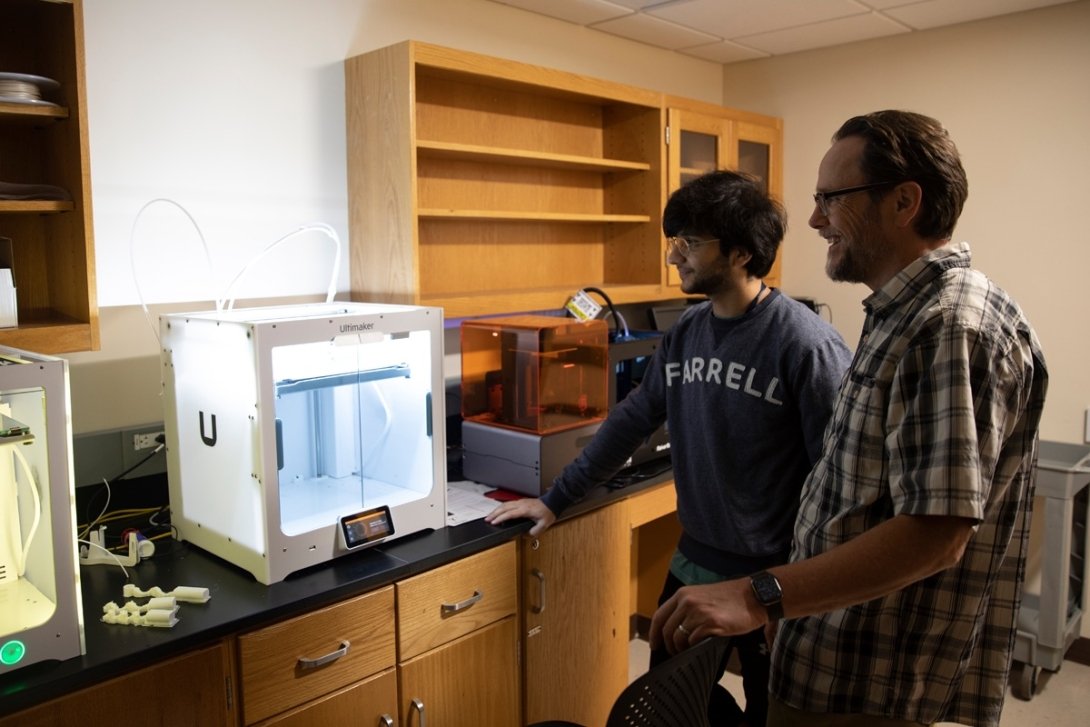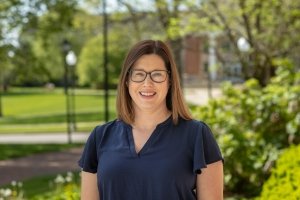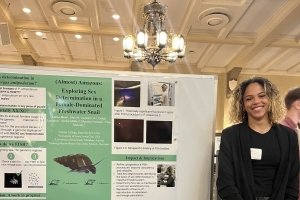National Science Foundation grant to boost project that combines research with mentoring undergraduates, high-school STEM outreach

Pictured above: Associate Professor of Physics Bruce Rodenborn and undergraduate research assistant Zaid Ahmed ’23 conduct collaborative research at Centre College as part of a grant from the National Science Foundation to study a medically important bacterium.
Centre College physicist Bruce Rodenborn has received a $260,000 National Science Foundation grant to study how bacteria swim using a medically important bacterium. The grant includes support for undergraduate research assistants and a summer high school outreach program to help increase diversity in Science, Technology, Engineering and Mathematics (STEM) fields.
“It makes a big difference when you’re trying to increase diversity within physics to have somebody work in your lab, to see themselves as a potential physicist,” Rodenborn said. An associate professor of physics, Rodenborn has hosted 35 undergraduates in his laboratory since joining Centre’s faculty in 2014. Some of them also have traveled with him to professional scientific meetings, an experience that led them to enter graduate school.
Rodenborn developed the grant proposal in with the help of Katherine Andrews, Centre’s director of research. The project is in collaboration with biologist Frank Healy, applied mathematician Hoa Nguyen, and biophysicist Orrin Shindell, all at Trinity University in San Antonio.
The researchers aim to improve computational methods for modeling bacteria and other microorganisms. Aerospace engineers often use numerical simulations rather than building prototypes. Mechanical engineers often rely on numerical simulations to ensure that the load-bearing capabilities of the bridges they design. They all expect their numerical simulations to give them an answer that corresponds with real-world numbers.
“The same has not been true for numerical simulations of microorganisms and other small-scale physics,” Rodenborn said. “Say I want to know the torque generated by a bacterial motor. We haven’t with any confidence been able to extract that number from a numerical simulation.”
The size of the bacteria complicates how they interact with fluids. This also complicates developing accurate numerical simulations of fluid dynamics with real-world relevance.
“Bacteria experience water something like cold honey. The equivalent problem is to do the experiment in a tank with a fluid that’s a hundred thousand times the viscosity of water.”
Rodenborn and his collaborators at Trinity University in San Antonio will create precisely calibrated computational tools to study the swimming strategies of genetically altered Pseudomonas aeruginosa variants. Among its many ill effects, this microbe afflicts cystic fibrosis patients, causing infections in the mucus membrane linings in their throat and lungs.
P. aeruginosa is a rod-shaped nanomachine that propels itself through fluids with a single flagellum spinning about 150 times a second. The team will alter the microbe’s motor proteins and video-record how it swims under laboratory conditions and will use directed evolution experiments to see if it evolves back to its natural protein configuration.
The researchers will use the calibrated simulations to noninvasively determine the observed forces and torques, then calculate factors such as the bacterium’s swimming efficiency.
“Every measurement is invasive in some way,” Rodenborn noted. “The way these types of measurements have been done in the past has been very invasive. We’re trying to just let the organism swim. The only thing we’re doing is lighting it up so that we can get video.”
From the microscope video, they will determine the rotation rates of the body and tail and their distance from the glass slide that contains the bacterium. The fluid dynamics near the boundary make bacteria swimming near a surface feel a heavy drag.
The collaboration will share its computational tools and a library of calibration measurements with the broader scientific community for application to other projects. The team’s results will have potential applications in medicine, biology, and the development of micro-robotic swimmers for precisely targeted drug delivery.
Rodenborn, meanwhile, will continue to provide research opportunities to undergraduates and, starting next summer, bring high school students into his lab.
“That’s the most rewarding part,” he said. “That’s why I came to Centre. I wanted to be a teacher and a scholar.”



